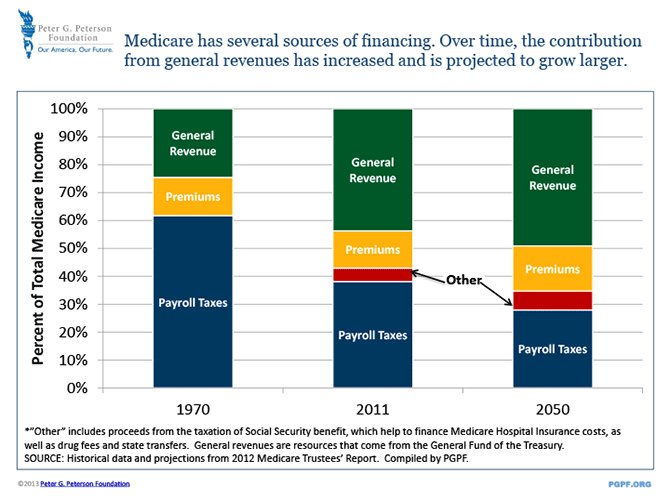You are here
Who Pays For Medicare?
Medicare is a major federal program that provides health insurance to elderly and disabled people. In 2011, Medicare provided benefits to more than 16 percent of the population or nearly 49 million people — more than 40 million seniors and more than 8 million persons with disabilities. The program plays a vital role in the country's health care system, paying for nearly one-fourth of all personal health care expenditures (including about 45 percent of the country's home health bills).
One of the biggest misconceptions about Medicare is that it is self-financed — through current beneficiaries' premiums and future beneficiaries’ payroll taxes. In truth, the program is heavily subsidized with general revenues. Premiums cover only a small fraction of Medicare's overall costs, while payroll taxes cover less than half of its costs. General revenues currently cover more than 40 percent of the cost of the program.
Medicare financing has changed significantly over the past 40 years. In 1970, 60 percent of its costs were financed by payroll taxes. Premiums paid by beneficiaries paid for an additional 13 percent of Medicare's overall costs. In total, payroll taxes and premiums covered about 75 percent of Medicare's costs in 1970. General revenues funded the remaining 25 percent.

But today, general revenues fund more than 40 percent of the program's costs and — if health care costs continue to grow and benefits don't change — will subsidize about half of the program by 2050, according to Medicare's trustees.
For more information, see PGPF's budget explainer on Medicare here.
